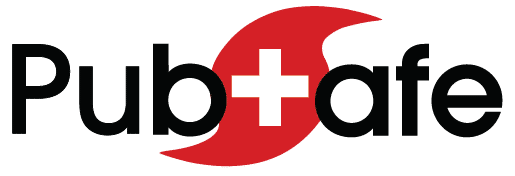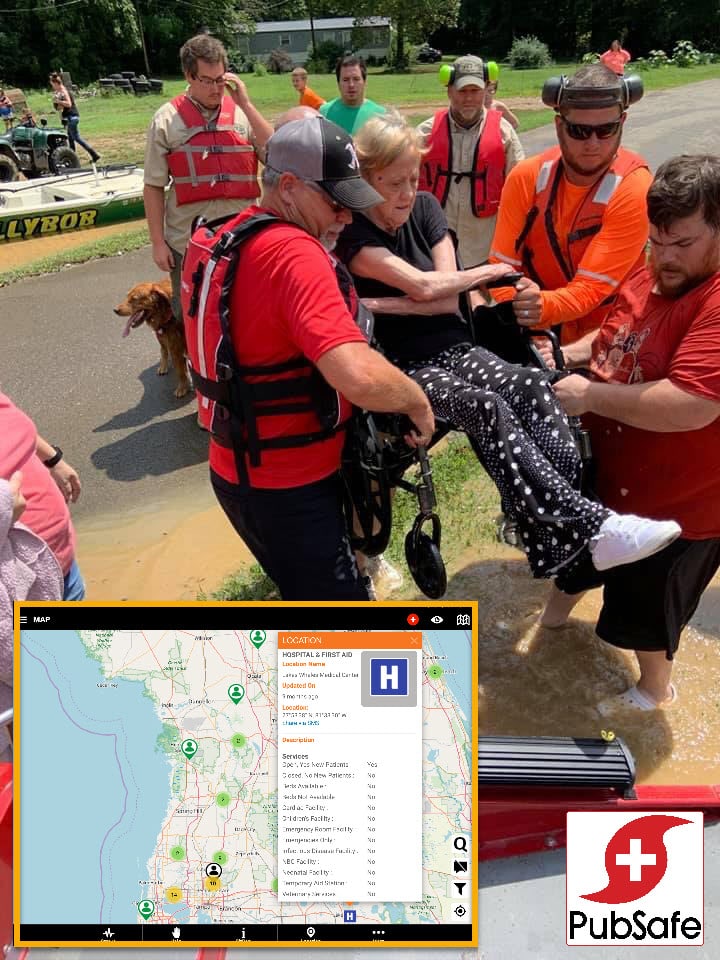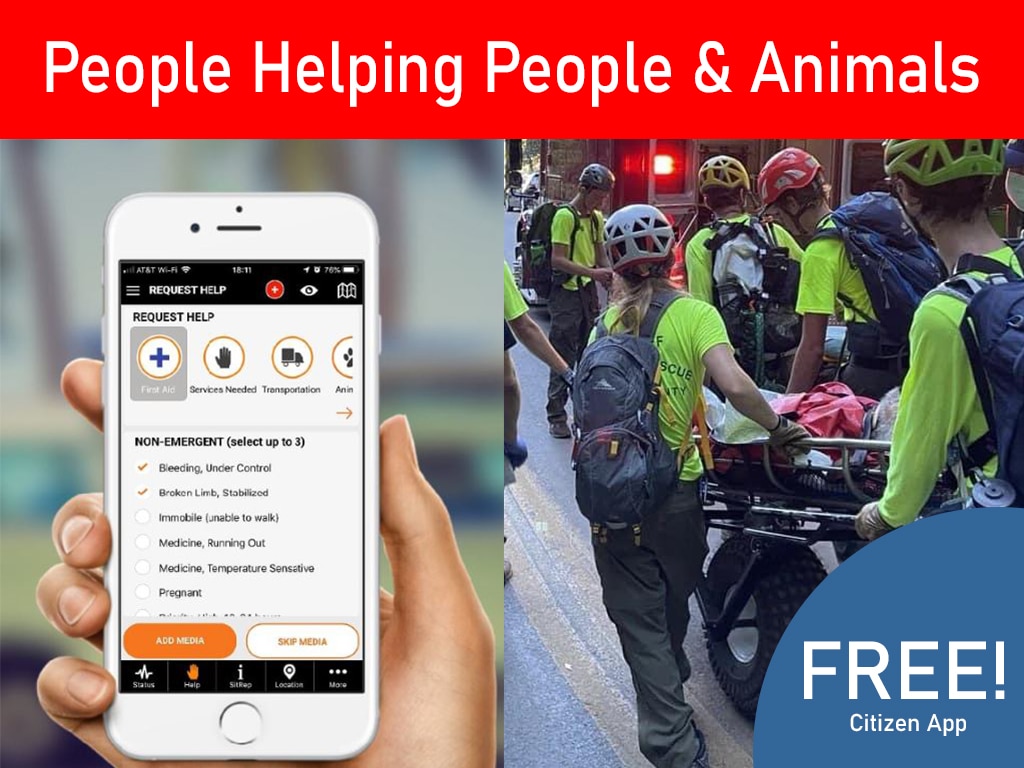Disaster Response Coordination of Multiple NGOs On A Unified Platform
One of the biggest challenges to disaster response coordination is managing and sharing information – between NGOs to provide a more efficient response. By working on a unified platform with an overriding goal of saving lives and property, NGOs can share and coordinate information, human and physical resources, Sharing a staging area is an example of a situation where several NGOs can benefit once a suitable location is found. When responders and SAR teams spend less time dealing with logistics and more time in coordination with themselves and each other, they are able to do more rescues.
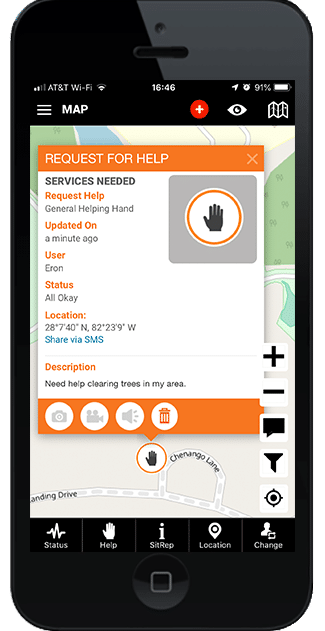
Overcoming Tribalism
This is one of the biggest challenges in any competitive space. You ask how can NGOs be competitive? Why would they not help each other? Why would they let people and animals suffer instead of embracing disaster response coordination and working together?
These things not only happen, but they happen between NGOs, the Government and corporations. Everyone wants to be busy and helping others. It is the aggressive personality full of initiative that sometimes works against the greater good of saving lives and reducing property damage.
Tribalism is something that has to be tackled from the top down. Leadership is key to establishing the mindset, yet maintaining an organizational identity. Embracing change and evolution is always tough but the SAR community has been through many changes since Hurricane Katrina.
In order to work together, coordinating NGO SAR during disasters is paramount to the future. Helping NGOs and the government work together is what PubSafe was built to do.
The Mechanics Of Disaster Response Coordination with Multiple NGOs
The process starts with data management. Data must be structured in order to put it in a database, shared, and displayed efficiently. Every NGO has a social media presence and most have websites that are used to collect information from citizens in need of assistance. In order to coordinate multiple NGOs, this data must be brought together and distributed in an efficient manner, not necessarily an equitable manner.
NGOs, and even the government, have different capabilities at different times of a natural disaster. Almost all major disasters have counted on NGOs to provide assistance to citizens and augment government efforts either formally or informally. The government does not have the quantity and types of resources groups like the Cajun Navy and Team Rubicon can provide. Conversely, NGOs cannot fix roads, repair a levy, use helicopters to rescue people or put at large wildfires.
Within the NGO community, organizations may have different missions, skills, and resources making them better suited for specific missions during specific phases of a natural disaster. By acknowledging an organizations strengths and weaknesses, response to the community can be coordinated.
Taking in data from multiple sources is coordinated by PubSafe tools and provided to any registered organization in the PubSafe portal. Once in the portal, logic is applied to control information distribution and disaster response coordination with field personnel.
Data input sources:
- social media
- website
- calls
- text messages
- related parties
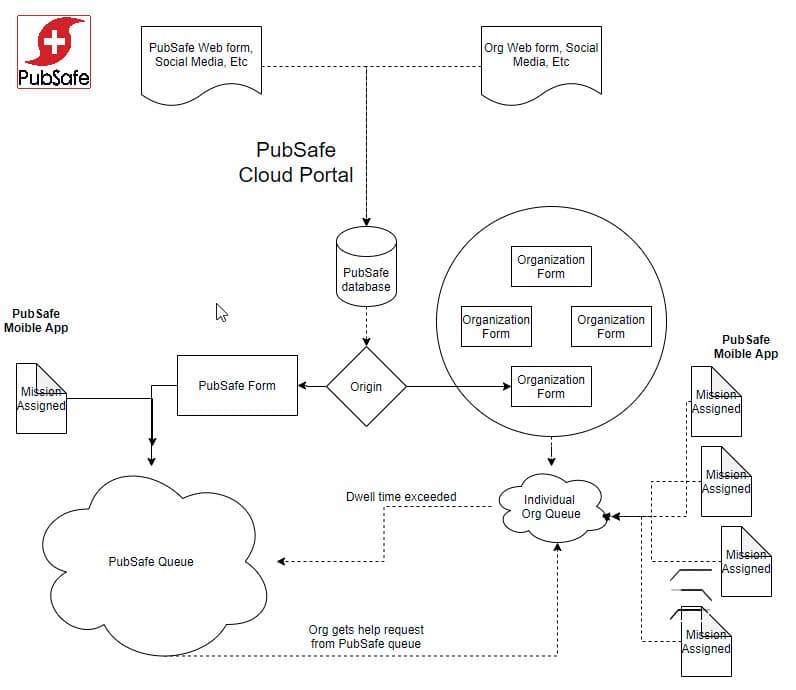
PubSafe Help Request Queue
When a help request (HR) is received from a PubSafe channel such as the website, it is put into the PubSafe queue. The PubSafe queue is available to any organization approved to use PubSafe. Citizens and individuals are not allowed to access organization tools which include dispatch, tracking and messaging functionality. When an dispatcher from any organization sees a HR they believe they can handle, they assign it to their organization.
The dispatcher then has X minutes to assign it to a mobile app user in a Responder role with a status of mission ready. One the mission is sent, and accepted, the Responder cannot receive another mission until the current mission is cleared as complete or not complete. If the dispatcher fails to find a responder able to accept the mission, the HR is returned to the PubSafe queue where another organization can work it.
In order to foster NGO activity and an identity, PubSafe provides each organization a custom URL. This URL embeds their organizations information so when a HR is received using the custom PubSafe web form, the HR goes directly into the organization queue. Once in the queue, the clock starts ticking for the HR to be dispatched as a mission in the same manner as a PubSafe queue HR.
By putting time limits on how long a HR can go unassigned as a mission, it keeps the HRs circulating between organizations. Additional logic can also be applied that will give government organizations visibility on PubSafe generated HRs before NGO would see them in the PubSafe queue. This can enable government SAR to take the high risk and skilled rescues when they have the resources. When the government runs out of resources during a large natural disaster as they often do, the HR assignment would time out and become available to any organization.
Over the course of the natural disaster, HRs will be continuously be moved down the mission funnel to an available responder. If NGOs agree to work together in this process, a large number of NGOs can utilize the PubSafe portal at one time and dramatically improve response efficiency.
